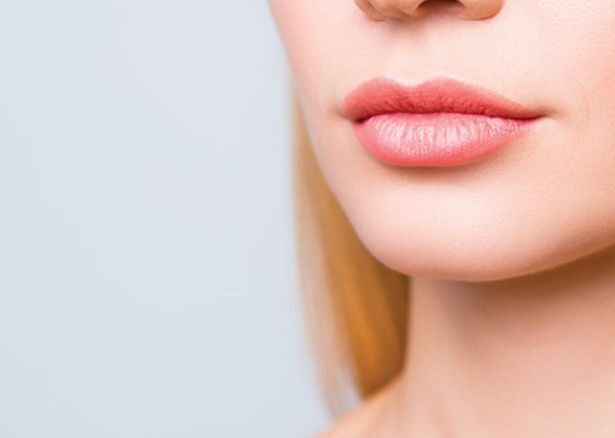This summer, get the right treatment at the right time to let your beauty shine.
Your facial plastic surgeon can implement the latest advances in skin care, non-surgical alternatives, and surgical options—all tailored to your stage in life—to help you exude a youthful, confident glow.
Twenties
Developments in aesthetic technology are prompting millennials to choose cosmetic treatments as a preventative measure. They are highly influenced by their own reflections in selfies on social media and are not afraid to take action with filler injections and resurfacing treatments. A recent survey released by the American Academy of Facial Plastic and Reconstructive Surgery states that 55 percent of surgeons saw patients who wanted to look better in selfies as a motivation for treatment; this is up 13 percent from the previous year.
While those in their 20s are eagerly seeking treatments, their priority still remains to look natural while postponing the signs of aging. You won’t see extreme fixes or procedures in this age group.
Thirties to fifties
For those in their 30s to 50s, sun protection, and a focus on healthy sleep, exercise, and diet habits, are a priority. Women start investing into subtle injectable treatments in their 30s to age more favorably. In their 40s and 50s, the texture and tone of the skin changes as pores become more enlarged and skin appears duller. Cell renewal, collagen production, and exfoliation are not as quick as it once was.
Minimally invasive treatments—chemical peels and laser resurfacing—are popular and customized based on skin type, history of sun damage, and desired results.
Sixties and above
As the 60s approach, eyelid procedures tend to take precedence. A full 73 percent of facial plastic surgeons report an increase in eyelid procedures to look less tired. One of the many factors of aging is volume loss in key areas such as the temples, tear troughs, and upper eyelid between the brow and creases. Facial plastic surgeons often assess where to remove sagging skin and tissue, and where to add volume—or a combination of both.
As the toll of gravity becomes more apparent, a facelift may be a good option. The lower two-thirds of the face is revitalized, repositioning and tightening underlying muscle and tissue, and removing excess skin.
During this decade, patients seek to match their outer visage to reflect their inner health, vitality, and youthfulness.
Regardless of your age, be proactive in choosing a healthy lifestyle. Focus on getting enough sleep, exercising, eating healthfully, and maintaining good personal relationships with others. In addition, trust your face to a facial plastic surgeon. Meet with your surgeon to see how you can take steps to feel amazing and look ageless for years to come.
Improve your look beginning with the eyes
The eyes are a focal point of your face and often one of the first areas to show the signs of aging.
Fat deposits begin to collect under the eyes, eyelids stretch, and the muscles surrounding the eyes weaken. Further expediting the wrinkling of this thin, delicate skin is sun damage, genetics, fatigue, and repeated facial expressions. Fortunately, your facial plastic surgeon has a wide variety of treatments—both surgical and minimally invasive—to address your concerns and to help you feel and look your best.
The first step is to take a look in the mirror. What is your motivation for improving the area around the eyes? Are you tired of looking tired all the time? Do your crow’s feet make you look much older than you feel? Maybe you want to decrease the bags under your eyes or fix a drooping upper eyelid. Also, consider if you are looking for a quick fix without any downtime or if you want a more permanent surgical solution.
The next step is to get educated about your options; keep reading for assistance in this area. Then you can schedule a consultation with your facial plastic surgeon to decide on a plan that is right for you.
Blepharoplasty
According to the American Academy of Facial Plastic and Reconstructive Surgery, blepharoplasty (eyelid surgery) is the second most popular surgery after nose surgery. This procedure can be customized to address your needs and may encompass upper eyelid surgery, lower eyelid surgery, or a combination of the two.
Cosmetically, you may want to reduce the excess skin in your upper eyelids to create a younger, more wide-eyed appearance. Your surgeon will make the incision along the natural lines and creases of the eyelid and excess fat, muscle, and loose skin will be removed. If you are seeking to add a crease to your upper eyelid, a variation of this surgery is used. Fine sutures close the incision and minimize the visibility of any scar.
Blepharoplasty can also reduce the bags under your eyes. There are two common approaches for lower eyelid surgery. In one approach, your surgeon will make the incision under the lower lashes and remove skin and fatty tissue. Scarring is hidden in the natural folds. In a second alternative, the incision is made from the inside of the lower lid to remove excess fat. This works best if you have a pocket of fat beneath the lower eyelid with no sagging skin. Blepharoplasty can also be used to correct ptosis, a drooping upper eyelid that is congenital or develops with age. Patients whose field of vision is limited due to ptosis may be able to seek insurance reimbursement since the procedure is medically necessary.
Nonsurgical options
One advantage of minimally invasive treatments is convenience. There is no downtime; however, keep in mind that results are not long lasting and may require repeated treatments to maintain.
Topical creams that contain vitamin A (retinoid) and antioxidants can help reduce the appearance of wrinkles under your eyes by increasing cell turnover, stimulating collagen, and preventing the breakdown of collagen.
Injectable fillers plump up the area and soften the wrinkles. The fillers bind to water and fill in the under eye hollows and reduce crow’s feet. Injectables are temporary and require repeated treatments.
Microdermabrasion removes the outer layer of dead skin cells via micronized crystals and stimulates collagen through the healing process. This type of skin rejuvenation is used to smooth crow’s feet and forehead lines.
Autologous fat can be injected into the hollows below the eyes to reduce a tired appearance. It is similar to the effect that is achieved with fillers, but using your own fat.
Neurotoxins, such as Botox, Dysport, and Xeomin, are injected under the skin to weaken the muscles in the face that pull the skin and cause wrinkles, e.g., crow’s feet or frown lines between the eyebrows.
Chemical peels come in varying strengths and can be used to remove the superficial layer of skin, boost collagen production, and soften static facial lines.
Fractional laser resurfacing treats a fraction of the skin by causing microscopic holes in the skin. This triggers the skin’s own healing process and stimulates new collagen production. This treatment is effective to reduce wrinkles around the eyes.
Schedule an appointment with your facial plastic surgeon; you’ll have that sparkle back in your eyes in no time.
What is right for me?
Several factors will be considered to determine what treatment or procedure is right for you, including age, skin type, ethnic background, degree of vision obstruction, and overall health. Your consultation appointment is the opportune time for a thorough examination and to answer your queries.
Blepharoplasty is a good option for patients that want to reduce puffiness, sagging skin, and drooping eyelids with permanent results. A less invasive treatment can address dark circles and fine lines around the eyes. It is important that you have realistic expectations and discuss this with your surgeon.
Ask the Surgeon
I am not happy with the shape of my nose. I have a hump in the middle and feel my nose overtakes the other features of my face. I am not sure about having surgery, are there other options I could pursue first to fix it?
Yes, minor tweaks are possible through minimally invasive treatments, such as filling in divots or depressed areas, lifting the angle of the tip, or smoothing the appearance of a bump. Two types of fillers are considered to be safe for use, hyaluronic acid-based soft tissue fillers, and Radiesse, which is a calcium hydroxyapatite filler. Results may last one to two years depending on the filler. However, keep in mind that overall reshaping of the nose is not possible without surgery. The best way to determine whether you are a good candidate for fillers is to meet with your facial plastic surgeon to evaluate the shape of your nose in relation to your face. Together, you can discuss your options and decide on the optimum treatment plan.
Health Tip
Sun exposure can affect facial plastic surgery results. You must be particularly vigilant to avoid sun exposure after facial exfoliation, resurfacing, and most laser procedures. Otherwise, sun exposure can cause discolorations or permanent scarring. Additionally, your skin needs approximately a month to completely recover and reconstruct the layer of recently exfoliated skin cells. It is best to schedule these treatments during the fall and winter. For all other procedures, your facial plastic surgeon may recommend staying out of direct sunlight during the recovery period and using sunblock with a sun protection factor of 30.
What’s New?
A recent study examined the effect that Botox injections have on scar formation and found that it reduced both the bumpiness and the width of the scars. In the double-blind, randomized controlled trial, 16 patients that underwent facial surgery between June and October 2015 were enrolled. Botox was injected into half of each surgical wound closure immediately following surgery, the other half was injected with saline solution. The scars were assessed and measured by two plastic surgeons independently at a six-month follow-up visit. Fourteen patients completed the study; the result was a significant improvement in appearance and narrower scar in the Botox-treated section. Since motion and tension of skin can cause scars to be thicker and wider, the Botox counters this by weakening the muscles under an incision and reducing motion and tension. While the sample size was small and needs to be repeated on a larger scale, this study demonstrates that early Botox intervention can produce better, flatter, and narrower surgical scars.

